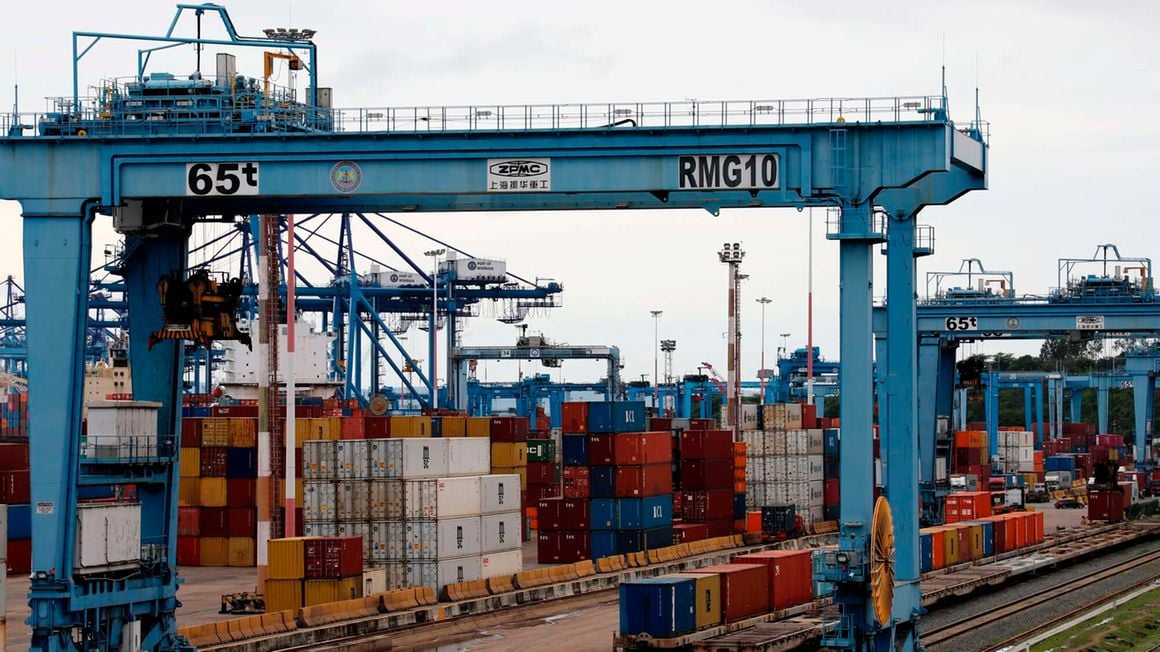
Our Projects are
Transforming African Trade
Quick Contacts
2nd Floor, Fidelity Insurance Centre Waiyaki Way, Westlands

The volume of fresh produce from Tanzania and Uganda exported using reefers through the port of Mombasa, Kenya has increased to six percent, compared to last year.
The Mombasa port recorded 6,813 20-foot equivalent units (Teus), helped by the installation of 1,367 reefer plugging points in its port facilities since last year. Reefers are refrigerated containers.
The $380 million Business Environment and Export Enhancement Programme, implemented by TradeMark Africa to push for radical decarbonisation of value chains that deliver fresh produce is yielding fruit, with more traders preferring sea to air in transporting fresh produce.
Consumers, especially in Europe, have been on the frontline in this push. Currently, perishable goods approvals through the Mombasa port are done at the point of loading, and permit approvals are granted by the KenTrade-operated National Electronic Single Window System.
Read: EA corridors face costs, logistical barrier hurdles
Kenya Ports Authority (KPA) Managing Director Capt William Ruto said the agency has installed 1,367 reefer plugging points: 795 at the Mombasa port, 336 at the Inland Container Depot (ICD) in Nairobi, 216 at the Lamu port and 20 at the Naivasha ICD.
“Kenya started transporting horticultural produce by sea in a move that would reduce the carbon footprint and improve earnings. This is after Kenya signed a pact with the European Union, one of its major export destinations, agreeing to transport fresh produce via sea after Mombasa port complied with requirements last year,” Capt Ruto said.
He added: “The goal is to enhance the competitiveness and share of exports of Kenyan avocado, mangoes and vegetables to Europe and other international markets, by focusing on resolving production, storage, logistics and value addition challenges that the sector faces.”
He said in line with KPA’s efforts to improve customer experience and provide trade facilitation initiatives, priority lanes are available and operational at the port of Mombasa to facilitate delivery of reefer exports, including access to port scanners.
“We have been receiving fresh produce from Uganda, Tanzania and other parts of the country and the demand made us increase plugging points. In handling this fresh produce, shippers of containerised perishable produce are granted priority to land at all our entry gates,” the ports boss said.
The use of reefers are ideal as temperature controlled containers equipped with a refrigerated unit that has to be plugged into an electrical source at a depot, terminal or on board a vessel.
Fresh produce exporters said the cost of transportation would now go down after Mombasa port established power points to maintain refrigerated facilities along the supply chain from Naivasha to Mombasa.
The advantage of using sea as mode of transport is that traders will benefit from economies of scale, thus lowering cost of transporting fresh produce by sea, compared to air, which has been expensive for traders.
To facilitate use of sea to transport fresh produce, KPA has up-scaled the number of reefer points and also prioritised fresh produce at scanning points at different port facilities to ensure quick truck turn-around time.
Read: Mombasa port grows 12pc despite regional rivalry
Hasit Shah, Chief Executive Officer of Vertical Agro (EPZ) Ltd, one of fresh produce exporters, said the use of sea has benefited them as they are now able to transport such products in bulk at lower prices.
“The introduction of special refrigerated containers and plugging points at port facilities has turned out to be a game changer. The cost has significantly gone down,” Mr Shah said.
The global cold chain logistics market was estimated to be $182.5 billion in 2022 and is expected to reach $343.75 billion by 2027, growing at a compounded rate of 13.5 per cent.
Maersk Eastern Africa head of integrated sales cold chain Karen Rono said the shipping lines have invested in the cold chain supply, which is now attracting more traders within the region.
“Since introduction of refrigerated containers, port users from East Africa have taken advantage of Mombasa port which installed more than 1,300 plugging points catering for the demand,” Ms Rono said.
Read original article
Disclaimer: The views and opinions expressed in this article are those of the authors and do not necessarily reflect the official policy or position of TradeMark Africa.